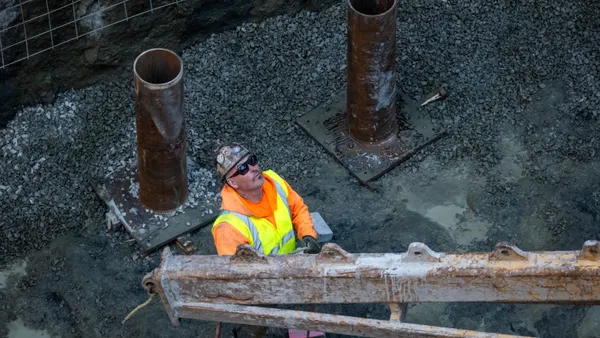Dive Brief:
-
Homeowners in predominantly black communities are twice as likely to be underwater — or in negative equity — on their mortgages compared to homeowners in mostly white neighborhoods, according to a report by online real estate website Zillow.
-
Despite the negative equity rate nationally in the third quarter of last year totaling 10.9%, Zillow reported that U.S. Census Bureau data found predominantly black neighborhoods had a negative equity rate of 20%, while mostly white communities had a 9.9% rate, and predominantly Hispanic neighborhoods had a rate of 12%.
-
The report also noted that in some metro centers, the racial disparity was even more acute, with Detroit seeing a negative equity rate of 35.1% in mostly black communities compared to a 9.5% rate in predominantly white neighborhoods.
Dive Insight:
Evidence of racial disparity in the housing market continues to mount. A recent cabinet exit memo by outgoing Department of Housing and Urban Development Secretary Julián Castro highlighted the extreme disparity in homeownership rates among white, Hispanic and African-American populations, at 71.9%, 45.6% and 43%, respectively.
Last month, Fannie Mae was hit with a lawsuit by U.S. housing organizations in a federal district in California amid allegations that the government-backed mortgage lender does not maintain and market foreclosures in primarily black and Latino neighborhoods to the same levels as it does in mostly white neighborhoods.
This followed a report by the City of New York Institute for State and Local Governance released in November that found that Hispanic, Asian and black renters in New York City were more likely than white renters to spend more than half of their household income on rent.
The lingering effects of housing discrimination could be a barrier to securing more black and Hispanic homeowners, groups that are often touted as crucial in aiding the recovery in homeownership rates nationally.
Pew Research Center found last month that homeownership rates have been falling since the mid-1990s, with more severe drops seen in households headed by adults younger than 35 years old as well as African-Americans and individuals in lower-income tiers.
However, efforts to combat the issue are being made, with the Obama administration in 2015 announcing new rules requiring cities to show how they plan to use federal funds to reduce racial disparity in housing.












